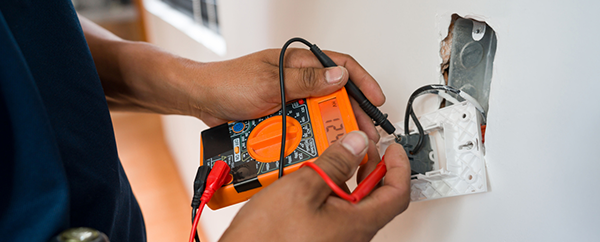
Electrical hazards cause more than 300 deaths and 4,000 injuries each year among U.S. workers. Electrocution is sixth among causes of workplace deaths in America. Since every worksite uses electricity, workplace electrical injuries are a real threat in any industry. Most of these accidents might have been prevented with these workplace electrical safety steps.
Granted, electrical hazards aren’t the leading cause of on-the-job injuries and accidents, but they are disproportionately fatal and costly. All electrical systems used in the workplace have the potential to cause serious harm, especially if improperly used or maintained.
Humans are good conductors of electricity. This means if an open electric circuit comes in contact with our body, we’ll get a shock. The electric current passes through our body from one point to another, causing great pain, burns, and damage to the tissues, nerves and muscles. These injuries not only disrupt the lives of the workers and their families, but also impact the productivity of employers. The good news is that most on-the-job electrocutions and electrical injuries can be prevented by following a few basic workplace electrical safety steps.
What are the four types of workplace electrical injuries?
According to Compliance Signs, four types of injuries can occur due to electricity:
- Electric shock
- Burns
- Falls
- Electrocution
What are the most common electrical hazards?
Workplace injuries are typically caused by:
- Faulty wiring
- Poorly installed, faulty and/or ill-maintained electrical equipment
- Overloaded or overheated outlets
- Use of flexible leads and extension cables
- Incorrect use of replacement fuses
- Using electrical equipment with wet hands or near the source of water.
How do these injuries usually occur?
- Direct contact with exposed electrical circuits or energized conductors.
- Electricity arcs (due to exposed energized conductors or circuit) circulating in the air can pass through a person who is grounded.
- Electrical arcs generate enough heat that, If skin comes in contact, it will burn internal tissues.
- Light emitted from an electric arc flash (UV and IR) can damage eyes.
- If an arc blast is created from the potential pressure of an arc flash, it can collapse lungs, cause physical injuries, and/or damage hearing.
How can we prevent accidents and enhance our workplace electrical safety?
Electrical outlets safety tips
- Do not use cracked, broken or scorched outlets. To support your workplace electrical safety, report the outlets to your maintenance department immediately.
- Don’t forcefully plug into an outlet if it doesn’t fit.
- Don’t overload the outlets.
- Turn off an electrical apparatus before plugging it into the outlet and also before unplugging.
- Don’t overload electrical circuits. Consult the label or instruction manual for the power requirements of electrical apparatus before use and compare it to the power available on the circuit.
- Use ground fault interrupters (GFIs) wherever water might be present, to protect you from electrical shock. Have your maintenance department replace older electrical outlets as soon as possible with GFI-type outlets.
- While unplugging, grip the plug and pull. Don’t pull the cord from a distance.
- Test electrical outlets with a circuit tester once a year.
Electric appliances
- Unplug or switch off electrical appliances when not in use or while cleaning, repairing or servicing.
- Ensure that all electrical appliances are turned off at the end of the day.
- Use only equipment that is double-insulated and properly grounded.
- Only use electrical equipment that is approved by a national testing laboratory.
- Don’t use electrical equipment or appliances with wet hands or near water and wet surfaces.
- Don’t use electrical equipment with exposed or bare wires.
- If water or a chemical is spilled on electrical equipment, immediately turn off power to the apparatus and shut off the circuit breaker before unplugging the unit.
Electrical Cords
- Don’t use equipment with frayed wires or defective plugs.
- All electrical apparatus should be grounded through a three-prong plug.
- Make sure power cords do not dangle and are secure.
- When removing the power cord plug from an outlet, make sure your hands are dry and always pull the cord out by grasping the plug.
- Refrain from running electrical cords across doorways, under the carpets, or in common areas.
- Ensure that two extension cords are not plugged together.
General Rules
- To enhance your workplace electrical safety, know the location of the electrical shut-off switch or circuit breaker and how to turn off the power.
- Maintain a clearance of at least 3 feet from all electrical panels.
- Pay attention to the warning signs. If equipment heats up, sparks, smokes or makes weird noises, immediately take it out of service.
- Place a cover or guard to exposed electrical components or wires.
- Clearly identify potential electrical hazards, such as electrical panels, with appropriate safety signs.
Thorough and ongoing employee training plays a crucial role in workplace electrical safety. Most electrical hazards can be easily prevented and controlled with a little caution and regular checks.
Review this infographic provided by the Electrical Safety Foundation International (ESFI) to learn more about workplace electrical injuries.

Resources:
Workplace Safety
Don’t Be Shocked
Check Off These Electrical Safety Do’s and Don’ts
Compliance Signs
eSafety
